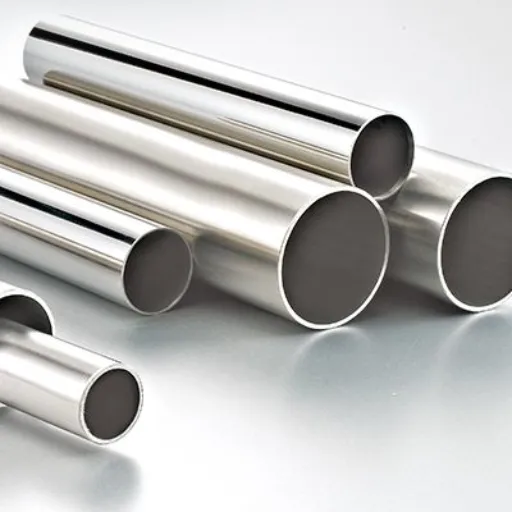Monel alloys have become materials that are preferred by the industry to the point that they are famous for their strengths, corrosion resistances, and versatility. The most known of these alloys are Monel 400 and Monel K500 which are two giants that give unique benefits for all kinds of applications, from marine engineering to aerospace innovation. If you have ever been curious about the reasons for such high appreciation of these alloys or the difference in their properties, then this guide is the right one for you. Please, come along as we analyze the standout characteristics, perks, and primary applications of Monel 400 and Monel K500, thus enabling you to make wise choices for your upcoming project.
Introduction to Monel Alloys
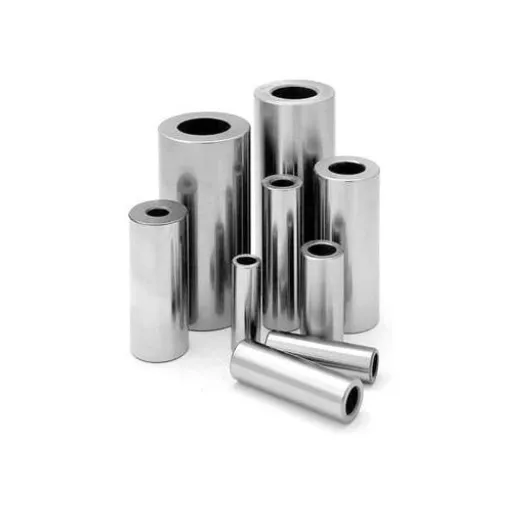
Monel alloys are exceptional materials that are almost always the first choice in industries for their excellent resistance to corrosion, high strength, and flexibility. The specifications of Monel 400 and Monel K500 include their chemical composition and characteristics—the K500 is the stronger and tougher of the two due to the presence of titanium and aluminum along with its excellent corrosion resistance.
What are Monel Alloys?
If you still do not knew, Monel alloys are metal set made from nickel and copper that are highly appreciated for their mechanical properties and resistance to corrosion. They are versatile, thus can be used in very severe conditions. At the beginning of the 20th Century, the Special Metals Corporation (the developer) patented the Monel alloys, which were made from nickel (65-70%), copper (20-30%), and small amounts of iron, manganese, carbon, and silicon. The special nature of the alloy makes it resist penetrating even the most hostile elements such as seawater, acids, and alkaline thus being ideal for marine, chemical, and even aerospace industries.
Key Insight: One of the significant properties that distinguish Monel alloys from others is their feature of maintaining not only mechanical but also corrosion resistance integrity over a wide temperature range with the lowest being cryogenic and the highest being several hundred degrees Celsius. For example, Monel 400 has a tensile strength of 70–100 ksi (480–690 MPa) and at the same time shows great resistance to chloride-induced stress corrosion cracking. Conversely, Monel K500, the one that gets its strength through age-hardening, gives even better strength and hardness measured up to 170 ksi (1170 MPa) and at the same time with superior resistance to sour-gas environments.
Historical Background of Monel
Monel, an alloy with a primary composition of nickel and copper, has its history dating back to the early 1900s. The alloy was first introduced to the market by the International Nickel Company (INCO) and was named after the company’s president, Ambrose Monell. Due to its outstanding strength, corrosion resistance, and versatility, strong and weak materials of the kind quickly became and were the dominant products for the times’ needs.
The rd, Monel was intended by then manufacturers of industry and also ships who depended on keeping their materials and surviving through tough environment. The alloy was one of the companies used in building ship hulls and later even in chemical processing plants; thus, its characteristic of survivability in hostile environments and resistance to seawater and chemicals was advantageous. The use of Monel in the war was extensive, covering the areas where it was most needed, such as in the production of aircraft and naval parts, proving to be very strategic.
Properties of Monel Alloys
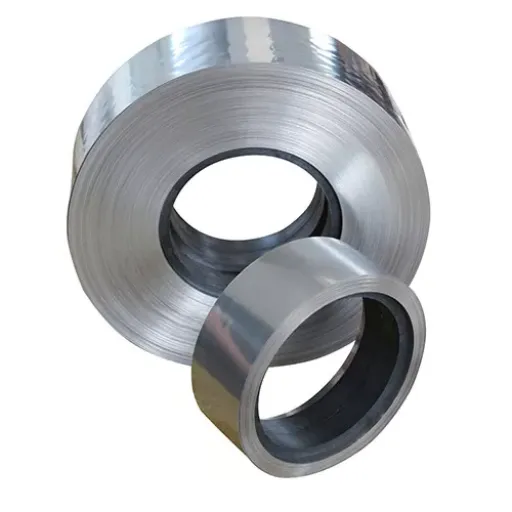
Monel alloys are characterized by their unmatched resistance to corrosion, strength, and longevity which makes them fit for use in industrial applications with very harsh environment. They are above all in marine and chemical being the reasons why they have so long been utilized in shipbuilding, military, and chemical processing.
Physical Properties of Monel 400
| Property | Value/Description |
|---|---|
| Density | Monel 400 density is about 8.80 g/cm³ (0.318 lb/in³) thus keeping providing a strong yet light-weight alternative compared to other alloys. |
| Melting Point | It has a melting range of 1,300°C to 1,350°C (2,372°F to 2,462°F) confirming that it can be used in high-temperature applications without any problem. |
| Tensile Strength | The tensile strength of Monel 400 varies between 70-100 ksi (483-689 MPa) which depends on the temper and processing of the material. |
| Corrosion Resistance | This alloy is up to seawater, hydrofluoric acid, and alkaline corrosion, thus becoming a reliable material for aggressive environments. |
| Thermal Conductivity | It has thermal conductivity that is around 21 W/m·K which indicates that it is suitable for handling heat in industrial applications. |
| Hardness | Monel 400 has an approximate Rockwell B hardness of 65-80 which is dependent on the conditions like annealing or cold working and such. |
Chemical Composition of Monel K-500
Monel K-500 consists of nickel-copper alloy to which aluminum and titanium have been added up and that gives us its strength and hardness higher than that of Monel 400. The process of precipitation-hardening might be applied to this alloy overshadowed by its excellent corrosion resistance and high mechanical properties, and thus already in a good position. The approximate chemical composition of Monel K-500 is listed below:
| Element | Composition |
|---|---|
| Nickel (Ni) | 63.0% minimum |
| Copper (Cu) | 27.0 – 33.0% |
| Aluminum (Al) | 2.3 – 3.15% |
| Titanium (Ti) | 0.35 – 0.85% |
| Iron (Fe) | 2.0% max |
| Manganese (Mn) | 1.5% max |
| Carbon (C) | 0.25% max |
| Silicon (Si) | 0.5% max |
| Sulfur (S) | 0.01% max |
The nickel and copper in proper proportion to make Monel K-500 able to endure a spectrum of corrosive environments including seawater and acidic regions. The aluminum and titanium addition enables the alloy to go through hardening by the process of precipitation increasing dramatically its strength and durability while still being ductile. That unique chemical composition is the reason why Monel K-500 is the first-choice material for very demanding applications that need corrosion-resistant, strong, and durable materials with outstanding mechanical properties.
Corrosion Resistance of Monel Alloys
The chemical composition of Monel alloys is such that it specifically offers great resistance to corrosion, especially Monel K-500. In addition to aluminum and titanium, the alloy is able to withhold and resist the aforementioned extreme conditions effectively along with maintaining its strength and durability.
Understanding Corrosion Resistance of Monel Alloys
Monel alloys, especially the K-500 variety, have an astonishingly high resistance to corrosion mainly responsible for their nickel and copper contents. This resistance is a major factor making the alloys widespread in the oil and gas sector, marine engineering, chemical processing and power generation as it is valid for controlling a huge range of aggressive conditions including seawater, hydrofluoric acid, sulfuric acid, and saline atmospheres among others.
Performance Highlight: In this aspect, the performance of the alloy in seawater environments should not be overlooked. Monel K-500 can be subjected to pitting, crevice corrosion, and stress corrosion cracking but those are the very challenges the alloy would face in the marine sector. Laboratory tests suggest the corrosion resistance of Monel K-500 to be very high even after long periods of exposure to seawater with corrosion rates measured to be as low as 0.018 mm per year under standard conditions. The capability of the alloy to withstand chloride-induced stress corrosion cracking is an incredible advantage compared to stainless steel when the alloy is in the same environment.
Monel Alloys vs. Stainless Steel
1
Corrosion Resistance
Monel alloys are the most superior amongst all alloys in terms of resistance to very corrosive environments, including the case of Monel K-500, which can withstand the corrosion of even seawater brine at rates far below that of stainless steel, thus being the most-preferred choice of material for marine and offshore industries. Stainless steel will struggle in case of environments with strong acids or chloride-rich conditions where Monel outperforms the latter.
2
Strength and Durability
Monel alloys possess superior tensile strength compared to many grades of stainless steel. One of these examples is the case of Monel K-500 having an average tensile strength of 130,000 psi as against the 316L stainless steel typically having a tensile strength of 70,000-90,000 psi. This strong nature of Monel inherently makes it more reliable for heavy-duty applications like pump shafts, oil production and aerospace components.
3
Cost Analysis
Although Monel alloys are stronger and more resistant to corrosion than stainless steel, they remain substantially more expensive. The high nickel content in Monel is a primary reason contributing to its elevated cost. Stainless steel, on the other hand, would be a more economical choice in non-aggressive environments along with providing a performance-cost balance.
Uses of Monel Alloys
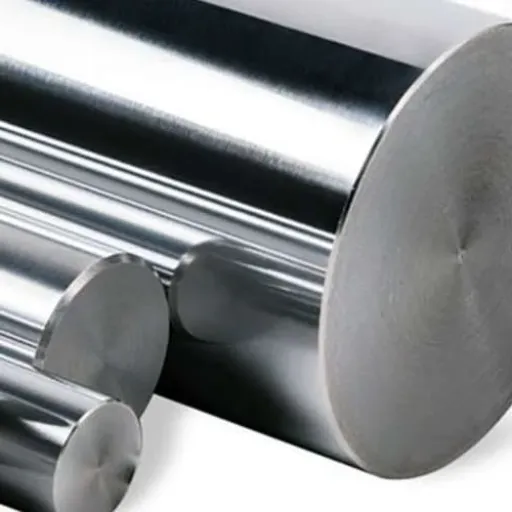
Due to the unique properties of the alloys, their harsh conditions and the corrosive nature of the environment in which they are being used, performance over cost considerations recommends Monel in such applications.
Monel 400 in Industry
1. Marine Applications
Monel 400 is utilized largely in the marine sector due to its top-notch corrosion resistance to seawater and even to the quickly flowing water. Its strength is taking advantage in propeller shafts, seawater valves, marine fittings, and piping systems. Besides, the feature of Monel 400 to resist biofouling guarantees it keeps performing well for many years even in the most challenging underwater conditions.
2. Chemical Manufacturing
The alloy’s acid resistance, including hydrofluoric and sulfuric acids, makes it a leading material for chemical processing equipment. The use of Monel 400 is frequent in heat exchangers, storage tanks, distillation towers, and piping systems where harsh chemicals are passed. For instance, the maximum allowable stress for Monel 400 can be over 18,000 psi at room temperature in chemical applications.
3. Petroleum and Gas Industry
Monel 400 is crucial for oil and gas where there are corrosive elements like hydrogen sulfide (H2S) and saline water. It finds its place in production tubing, control lines, and downhole equipment. For harsh conditions in offshore drilling, Monel 400 is often preferred because it can put up with both acid and alkaline nature of the environment.
Monel Alloys in Pipes
Monel metal (K-500 and 400) alloys are majorly recognized for their outstanding corrosion resistance, and non-corrosive properties as well as strength and durability, hence these qualities lead to their widespread use in pipe making. They are the most suitable materials for such industries as chemical, oil and gas, and marine engineering because of their low corrosion rate compared to other pipe materials.
One of the major benefits of Monel pipes is their strength to stand very sharply changing temperatures as well as very hot corrosive environments like salty water, acidic and alkali compounds. To illustrate, Monel 400 has a corrosion rate of less than 0.002 inches per year in seawater; hence it has found its way into being a popular choice for marine pipelines and desalination systems. Moreover, Monel K-500 is the product that has the advantage of both Monel 400’s superior corrosion resistance and the added mechanical strength and hardness obtained via the process of precipitation hardening.
Comparative Analysis of Monel Alloys
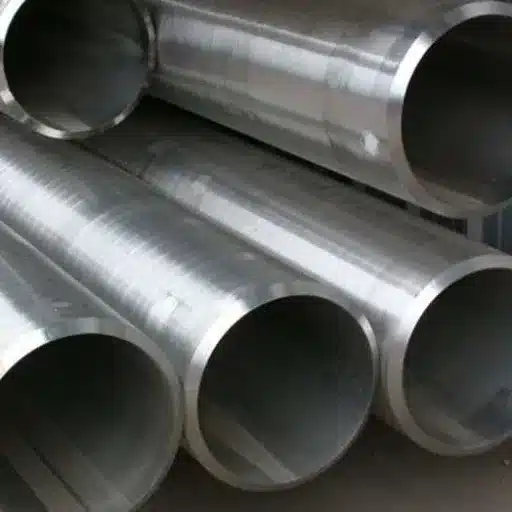
Expert Recommendation: If I had to recommend, I would definitely go for Monel 400 in cases where there is an extreme need for corrosion resistance in seawater or similar environments. Monel K-500, though, has the edge in cases where you require both the corrosion resistance and very high mechanical strength derived from its precipitation-hardening process.
Monel 400 vs. Monel K-500
Composition and Mechanical Properties
Monel 400 is an alloy which is mainly made of nickel (63%) and copper (34%) with only very small quantities of iron, manganese, and other trace elements present. It has a corrosion resistance that is excellent in many environments including seawater and acidic and alkaline conditions. The tensile strength of Monel 400 typically ranges from 70,000 to 85,000 psi.
Monel K-500 is nothing but a precipitation-hardened version of Monel 400 with the inclusion of aluminum (max 2.3%) and titanium (0.35%-0.85%) being the new elements in its structure. This development of microstructure is done to attain higher strength, Monel 400 goes through the aging process during which; its tensile strength becomes more than 200,000 psi making it a great candidate for high-performance applications in areas needing higher mechanical performance.
Corrosion Resistance
Generally, Monel 400 and Monel K-500 both have admirable corrosion resistance in many environments but marine and chemical ones. Nevertheless, in contrast, Monel K-500 being the stronger one may get a bit more resistance to stress corrosion cracking than Monel 400 which on the other hand is reducing and oxidizing condition performing excellently.
Applications
Due to the versatility of its properties and the strong protection it offers against corrosion, Monel 400 finds its applications in a wide range of industries such as marine engineering, chemical, and hydrocarbon processing, and fuel tanks manufacturing. It can be used for pipes, pump shafts, and heat exchangers.
Monel K-500, due to its superior strength and hardness, is suitable for high-end applications like the drilling tools of oil and gas, hydraulic systems, and fasteners in extreme condition. It also has a much higher strength making it a good option for critical components such as valve stems, pump impellers, and springs.
Advantages of Using Monel Alloys
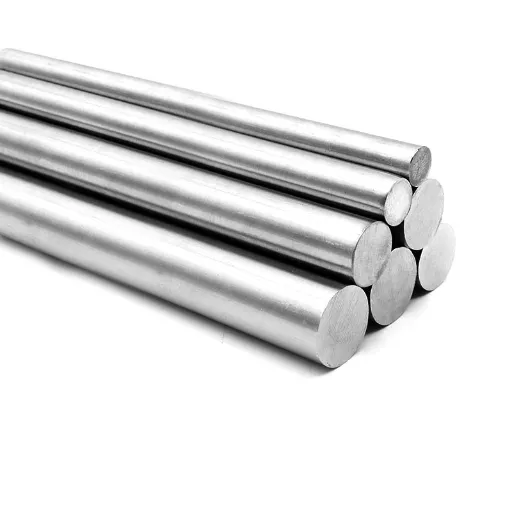
✓
Corrosion Resistance
Monel alloys had a great time in corrosion with the exception of marine and chemical processing settings. They are very much resistant against salt and acid and can suffer no damage via pitting, crevice corrosion, and stress corrosion cracking among others. Monel 400, for instance, was found to demonstrate a far less performance against chloride-induced corrosion when compared to stainless steels and thus was widely accepted in applications of seawater piping systems.
✓
Strength and Durability
Monel alloys have a reputation of being strong, and that is their weak point. I.e, Monel K-500 is one case with yield strength three times that of Monel 400 making it, therefore, suitable for load-bearing as well as high-stress applications. Besides that, their just-right strength guarantees quite an extended service life and hence less frequent replacements.
✓
Thermal and Electrical Conductivity
These alloys are also comparatively others in terms of conductivity (thermal and electrical) when it comes to corrosion-resistant materials. Hence, they find favor at the application of heat exchangers and electrical components. Monel’s conductivity together with corrosion resistance allows the metal to be used in industrial heat transfer processes.
Reference Sources
-
Verified Market Reports
- Title: “Monel Alloy Market Size, Consumer Insights, Trends & …”
- Description: This source discusses the extensive use of Monel alloys in industries like oil and gas, chemical processing, maritime, and aerospace, highlighting their durability and high performance.
- Link: Verified Market Reports
-
ChemAnalyst
- Title: “Monel Market Size, Share, Growth, Analysis and Forecast …”
- Description: This report identifies key target audiences, including manufacturers, stakeholders, and government bodies, and provides insights into the Monel market’s growth and applications.
- Link: ChemAnalyst
-
HD Steel Coil Blog
- Title: “How to promote Monel Alloy Bar effectively?”
- Description: This blog explores promotional strategies for Monel alloys and highlights the industries and platforms where they are most relevant.
- Link: HD Steel Coil Blog
Frequently Asked Questions (FAQs)
Are Monel Alloys and Their Composition the Same?
Monel alloys are identified as a class of nickel-copper that possess remarkable mechanical properties and exceptional resistance against corrosion. Monel 400 is the most important alloy in the category it accounts for 67% nickel and 30% copper, plus a little iron, manganese, carbon, and silicon. The combination of elements is what makes Monel able to survive different severe environments, one of which is even in the sea water applications.
What is the Difference Between Monel 400 and Monel K-500?
Monel 400 is very much appreciated due to its corrosion resistance its use in marine applications with regard to Monel K-500 strength has increased because of the addition of titanium and aluminum. The K-500 alloy shows more yield strength than the 400 and is even easier to machine that is why it is pleasing to use in the cases where strength and corrosion resistance are needed simultaneously.
In What Applications Monel 404 is Used?
Monel 404 is a Monel alloy that is meant for very demanding applications that require ultra-high strength and ultra-high corrosion resistance. This particular grade is used predominantly in marine environments when the material’s contact with seawater leads to heavy erosion of the material. Its property of being non-magnetic is an added factor that makes the alloy usable in discreet electronic device applications.
What is the Reason for Monel Alloys to Be Classified as More Expensive than Stainless Steel?
Compared to stainless steel, Monel alloys are considerably more expensive due to their high nickel content and the intricate manufacturing processes. High cost, however, is justified by their high resistance to corrosion and high strength properties which allow them to be used in specialized applications that would otherwise fail with regular stainless steel due to low quality.
What are the Benefits of Monel Alloys?
Among the advantages of Monel alloys are their superior mechanical properties, resistance to corrosion, and the capacity to operate at high temperatures. Their application is wide-ranging in the various industries coming into contact with situations like marine, chemical processing, and oil and gas. Moreover, the magnetic nature of the Monel alloys is a concern in the areas where the concern for magnetic interference is high and thus, the alloys are deemed suitable.
This comprehensive guide has explored the exceptional properties and applications of Monel 400 and Monel K-500 alloys, demonstrating why they remain the preferred choice for industries requiring superior corrosion resistance and mechanical strength in the most demanding environments.

